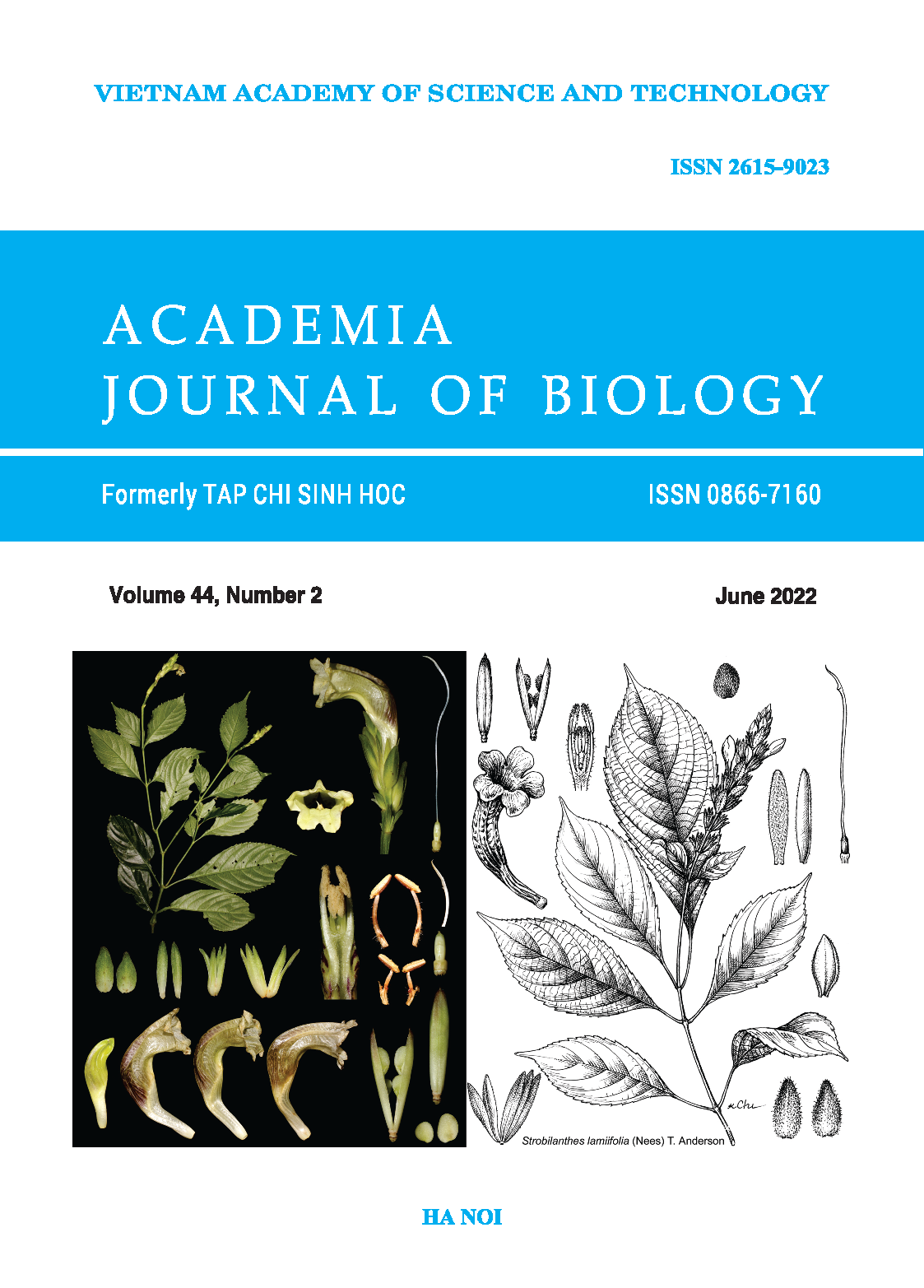The biomass characteristics of \(\textit{Hydropuntia eucheumatoides}\) (Harvey) in the tidal beach of Hon Rua Island, Nha Trang Bay: potential source for exploitation, culture, and food processing
Authors
DOI: https://doi.org/10.15625/2615-9023/15101Keywords:
Cultivation, carbohydrate, conserve, exploit, Hydropuntia eucheumatoides.References
Berna K., Semra C., Gamze T., Hatice T., Edis K., 2013. Seaweeds for Food and Industrial Applications: Chapter 31. Food Industry of Publ. Intech, pp. 736−748.
Brinkhuis B. H.,1985. Handbook of Phycological Methods, Ecological Field Methods: Macroalgae. Cambridge: Cambridge University Press, pp. 461–477.
Carlos F. D. G., Suzanne F., 2004. Systematics of the gracilariaceae (gracilariales, rhodophyta): a critical assessment based on rbcl sequence analyses. J. Phycol., 40: 138–159.
Cherbadgy L.N., Propp, 2010. Environmental conditions and productivity characteristics of Hydropuntia eucheumatoides (Rhodophyta) in the waters of Vietnam. Proceedings of the international conference Marine Biodiversity of East Asian seas status, Challenges and sustainable development. pp. 45−50.
Dubois M., Gilies K., Hammilton J.K., Robers P.A. and Smith F.A., 1959. A colorimetric method for the determination of sugars related substances. Analysis Chemical, 28: 350–356.
Edward G., David M., Celicina A., 1996. Spore culture of the edible red seaweed, Gracilaria parvispora (Rhodophyta). Aquaculture, 142(1−2): 59−74.
Gurgel, C.F.D., Norris J.N., Schmidt W.E., Le H.N. & Fredericq S., 2018. Systematics of the Gracilariales (Rhodophyta) including new subfamilies, tribes, subgenera, and two new genera, Agarophyton gen. nov. and Crassa gen. nov. Phytotaxa, 374(1): 1−23.
Huynh Quang Nang, Nguyen Huu Dinh, 1998. The seaweed resources of Viet Nam. JICA (1998): 62−69.
Le Nhu Hau, Nguyen Huu Dai, 2010. Gracilaria of Vietnam uses resources, Pub. Natural Science and technology, pp. 247.
Myoung L.C., Chen Y., Sang M.K. and Sang G.Y., 2010. Molecular Characterization and Biological Activities of Watersoluble Sulfated Polysaccharides from Enteromorpha prolifera. Food Sci. Biotechnol., 19(2): 525−533.
Nguyen Van Mui, 2007. Practicing biochemistry. Pub. Ha Noi, pp. 205.
Saito Y., Atobe S., 1970. Phytosociological study of intertidal marine algae I. Usujiri Benten-Jima, Hokkaido. Bull. Fac. Fish. Hokkaido Univ., 21(2): 37−69.
Samira A., Ben M., Hawaa S., Faiza A., Fatma F., 2009. Determination of Available Nitrate, Phosphate and Sulfate in Soil Samples. International Journal of Pharmtech Research, 1(3): 598−604.
Suthasinee Y., Soottawat B., Passakorn K., 2015. Physico-chemical and gel properties of agar from Gracilaria tenuistipitata from the lake of Songkhla, Thailand. Food Hydrocolloids, 51: 217−226.
Thianming Z., David S. J., Randy L. Wehling and Bhima G., 2008. Comparison of Amylose Determination Methods and the Development of a Dual Wavelength Iodine Binding Technique. Cereal Chern, 85(1): 51−58.
Tsutsui Isao, Huynh Quang Nang, 2005. The common Marine Plants of Southern Vietnam. Pulished by Japan Seaweed Association, Japan. pp. 250.
Vo Thanh Trung, Tran Van Huynh, Tran Mai Duc, Pham Duc Thinh, Pham Trung San, Nguyen Thanh Hang, 2019. A nutrient method for cutivation of macroalgae Ulva papenfussii. Journal of Biology (Tap chi Sinh hoc), 41(1): 109−116.
Vo T.D., Nishihara G.N., Kitamura Y., Shimada S., Kawaguchi S. & Terada R., 2015. The effect of irradiance and temperature on the photosynthesis of Hydropuntia edulis and Hydropuntia eucheumatoides (Gracilariaceae, Rhodphyta) from Vietnam. Phycologia, 54(1): 24−31.
Yanagisawa M., Nakamuraa K., Arigab O., Nakasakia K., 2011. Production of high concentrations of bioethanol from seaweeds that contain. Process Biochemistry, 46: 2111–2116.
Downloads
Metrics
Downloads
PDF Downloaded: 118





